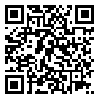Volume 17, Issue 1 (5-2018)
jhosp 2018, 17(1): 17-27 |
Back to browse issues page
Download citation:
BibTeX | RIS | EndNote | Medlars | ProCite | Reference Manager | RefWorks
Send citation to:



BibTeX | RIS | EndNote | Medlars | ProCite | Reference Manager | RefWorks
Send citation to:
tavakoli N, amini M, Mahmodinejad M, veisi M, amiri H, sadat Y et al . Estimating Admission and Inappropriateness of Patients in Iran University of Medical Sciences: A Steps to Improve Hospital Consumption Patterns. jhosp 2018; 17 (1) :17-27
URL: http://jhosp.tums.ac.ir/article-1-5960-en.html
URL: http://jhosp.tums.ac.ir/article-1-5960-en.html
Nader Tavakoli1 
 , Milad Amini2
, Milad Amini2 
 , Mahsa Mahmodinejad3
, Mahsa Mahmodinejad3 
 , Mohammad Veisi4
, Mohammad Veisi4 
 , Hasan Amiri5
, Hasan Amiri5 
 , Yousef Sadat6
, Yousef Sadat6 
 , Ali Tahmasebi *
, Ali Tahmasebi * 
 7
7

 , Milad Amini2
, Milad Amini2 
 , Mahsa Mahmodinejad3
, Mahsa Mahmodinejad3 
 , Mohammad Veisi4
, Mohammad Veisi4 
 , Hasan Amiri5
, Hasan Amiri5 
 , Yousef Sadat6
, Yousef Sadat6 
 , Ali Tahmasebi *
, Ali Tahmasebi * 
 7
7
1- Associate professor in Emergency Medicine, Trauma and Injury Research Center, Iran University of Medical Sciences, Tehran, Iran
2- BSc in Health Care Management, Trauma and Injury Research Center, Iran University of Medical Sciences, Tehran, Iran
3- Assistant professor in Emergency Medicine, Trauma and Injury Research Center, Iran University of Medical Sciences, Tehran, Iran
4- MSc in Health Economics, School of Health, Tehran University of Medical Sciences, Tehran, Iran
5- Associate professor in Emergency Medicine, Emergency Management Research Center, Iran University of Medical Sciences, Tehran, Iran
6- Health Information Management, Paramedicine Faculty, Shahid Beheshti University of Medical Sciences, Tehran, Iran
7- Health Management and Economics Department, School of Public Health, Tehran university of medical sciences, Tehran, Iran, * (Corresponding author), Email: ali66tahmasebi@gmail.com, Address: Fourth floor, Health Management and Economics Department, School of Health, Tehran University of Medical Sciences, Tehran, Iran
2- BSc in Health Care Management, Trauma and Injury Research Center, Iran University of Medical Sciences, Tehran, Iran
3- Assistant professor in Emergency Medicine, Trauma and Injury Research Center, Iran University of Medical Sciences, Tehran, Iran
4- MSc in Health Economics, School of Health, Tehran University of Medical Sciences, Tehran, Iran
5- Associate professor in Emergency Medicine, Emergency Management Research Center, Iran University of Medical Sciences, Tehran, Iran
6- Health Information Management, Paramedicine Faculty, Shahid Beheshti University of Medical Sciences, Tehran, Iran
7- Health Management and Economics Department, School of Public Health, Tehran university of medical sciences, Tehran, Iran, * (Corresponding author), Email: ali66tahmasebi@gmail.com, Address: Fourth floor, Health Management and Economics Department, School of Health, Tehran University of Medical Sciences, Tehran, Iran
Abstract: (5523 Views)
Background: Assessment of appropriate and inappropriate services offered at the hospital is a very important topic to improve resource allocation. Thus, this study performed to assess inappropriate admission and length of stay to modify extra costs and effective resource management.
Materials and Methods: This study was a descriptive-analytic one which conducted as a cross sectional study in the first half of 2017. The Appropriateness Evaluation Protocol(AEP) was used to collect data. A total of 420 patients hospitalized in Haft Tir and Firoozgar Hospitals were selected using stratified sampling method. collecting data was analyzed using descriptive and analytical statistics by SPSS18.
Result: 391 individuals were admitted appropriately and 29 were classified as inappropriate admission. The rate of inappropriate admission estimated about 7% in the hospitals. female Sex, type of admission, the length of admission and place of patient residence had effect on prediction of inappropriate admission rate (p ≤ 0.05).
Conclusion: Considering the high percentage of inappropriate admission and stay length of patients as well as high costs of health services in these hospitals, the problems can be greatly reduced using proper planning, admissions management between the hospital units.
Materials and Methods: This study was a descriptive-analytic one which conducted as a cross sectional study in the first half of 2017. The Appropriateness Evaluation Protocol(AEP) was used to collect data. A total of 420 patients hospitalized in Haft Tir and Firoozgar Hospitals were selected using stratified sampling method. collecting data was analyzed using descriptive and analytical statistics by SPSS18.
Result: 391 individuals were admitted appropriately and 29 were classified as inappropriate admission. The rate of inappropriate admission estimated about 7% in the hospitals. female Sex, type of admission, the length of admission and place of patient residence had effect on prediction of inappropriate admission rate (p ≤ 0.05).
Conclusion: Considering the high percentage of inappropriate admission and stay length of patients as well as high costs of health services in these hospitals, the problems can be greatly reduced using proper planning, admissions management between the hospital units.
Keywords: Admission, Length of Stay, Appropriateness, Inappropriateness, Appropriateness Evaluation Protocol
Type of Study: Original Article |
Subject:
مدیریت مالی و اقتصاد در بیمارستان
Received: 2018/02/21 | Accepted: 2018/04/21 | Published: 2018/05/6
Received: 2018/02/21 | Accepted: 2018/04/21 | Published: 2018/05/6
| Rights and permissions | |
 |
This work is licensed under a Creative Commons Attribution-NonCommercial 4.0 International License. |



